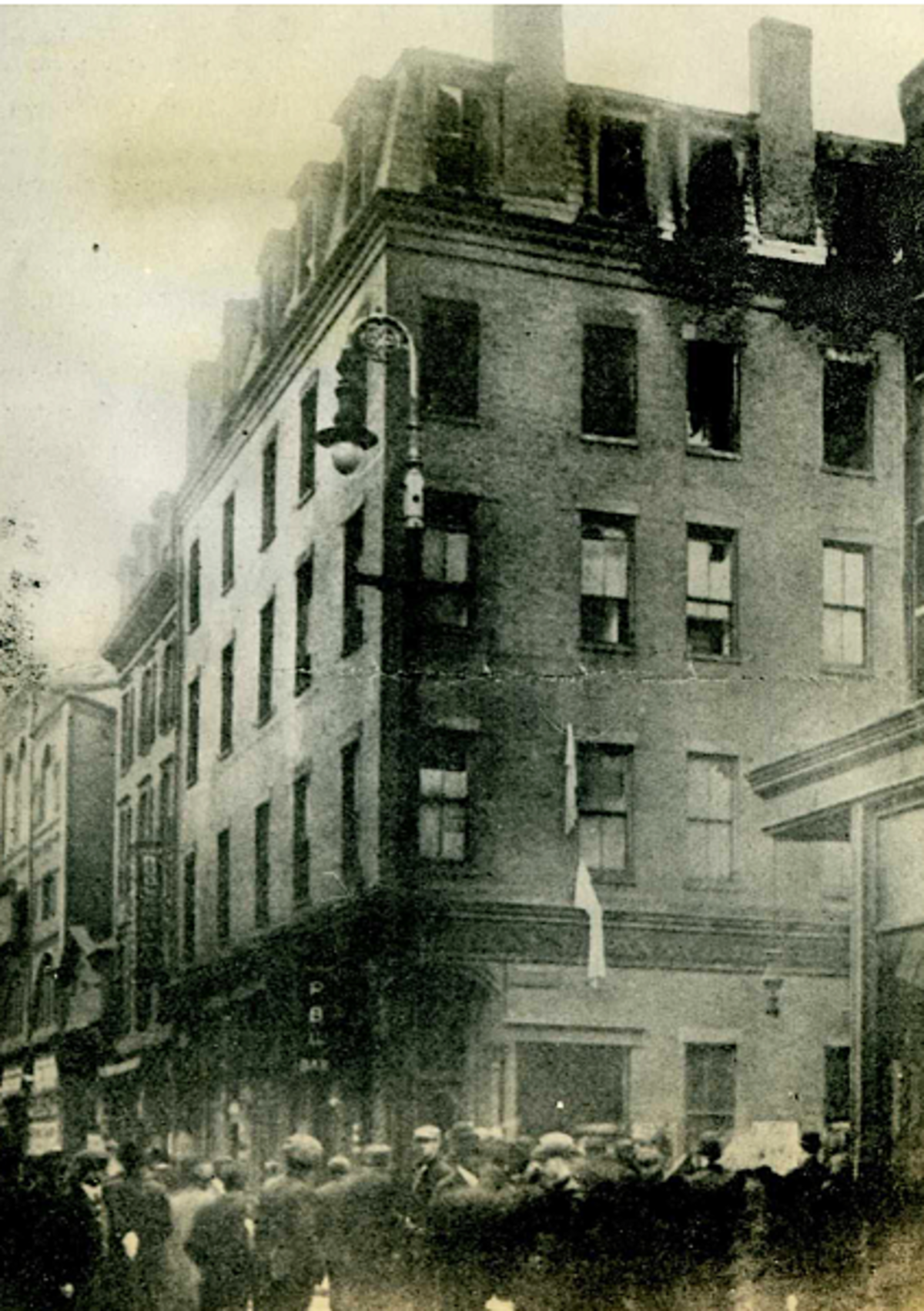Stories from Mount Hope: Victims of the 1913 Arcadia Hotel Fire
One monument on Mt Hope Avenue commemorates the victims of a tragic event in Boston history, the fire at the Arcadia Hotel in 1913.
Set back from Mt Hope Avenue is a pink granite monument that reads:
In memory of
The Unfortunate Victims of the
Hotel Arcadia Fire
Where 28 Lost Their Lives
The 10 Unclaimed Buried Here
By
Boston Lodge No 10. B.P.O. Elks
The Salvation Army was among the first to institute cheap lodging houses where a man could sleep for only 10 or 15 cents. Hotel Arcadia was, according to the Boston Globe, “the first to enter into competition with the Salvation Army” and was “one of the best of the cheap lodging houses in the city.” Low priced lodging houses - often called "flophouses" - were common. There were upwards of 20 in Boston, most with pleasant sounding names, such as the "Star, Palace," "Old Comfort," and "Homestead."
Hotel Arcadia at 1202 Washington Street, not far from the Dover Street Elevated Station, was one of many establishments in the South End and West End where a man could get a bunk bed for little money. Lodgers slept in the four upper floors while the ground floor held a saloon, shooting gallery, bootblack and tobacconist. At 2 a.m. on December 3, 1913, the brick, five-story hotel burst into flames.
The Boston Globe headlined the disaster: “Morning Fire Deadliest In All History of Boston; Lodgers Suffocated in Bed With No Chance to Save Their Lives.” It described the 155 individuals registered that night as “aged, homeless, friendless wanderers.” Twenty-eight people died, including two who leapt to their death. It was called “the worst holocaust in the annals of Boston.” The fire appeared to have started in a garbage filled closet under a staircase. Among the first to sound the alarm and escape was an 18 year old who worked as a scene painter at the nearby Grand Opera House. He had been dozing in a reading room chair because he couldn’t afford a bed.
A number of factors lead to the high death toll. The building may have had fire extinguishers, but none were used. Signs to the fire escape pointed north and south… but to windows, not to the one fire escape. That fire escape could only be reached through small bathrooms on the second and third floors. The previous October, the Building Commissioner had ordered the hotel owner to install additional fire escapes. But at the time of the fire, there was still only one.
The building lacked an automatic fire alarm; the call to the fire department came from a nearby call box. Firefighters hesitated to act because the elevated train tracks running only feet from the building were still electrified, even though trains had stopped running for the night. Precious time was lost waiting for power to be shut off. Investigations followed. Eight were underway at one time.
After the fire Mayor Fitzgerald issued a statement, a part of which follows: "When I went into the building I saw a large amount of rubbish under the stairways, and Fire Commissioner Cole told me that it is his belief that the fire caught in this way. He also informs me that if automatic sprinklers had been in use the fire never would have gotten any headway. Last year I petitioned the legislature for laws which would compel the installation of fire sprinklers in premises of this kind. I contend now, as I did a year ago and have always contended, that automatic sprinklers should be put in every room where human beings work or sleep.
On January 13, 1914, just over a month later, the New Granville House at 53 Green Street in the West End went up in flames forcing out 39 lodgers. Fearing a repeat of the Hotel Arcadia the lodgers acted fast, the fire department moved in quickly and the only loss was $1700 in furs from Sterling’s Fur Shop on the ground floor.
- Bibliography: Fire and Water Engineering Dec. 10, 1913; Leventhal Map Collection, BPL; usdeadlyevents.com
The Stories of Mount Hope blog features periodic posts on a variety of topics concerning historic Mount Hope Cemetery. This blog is hoping to unearth the hidden stories of Mount Hope Cemetery. Please let us know if there is something you think should be highlighted by emailing storiesfrommounthope@boston.gov



